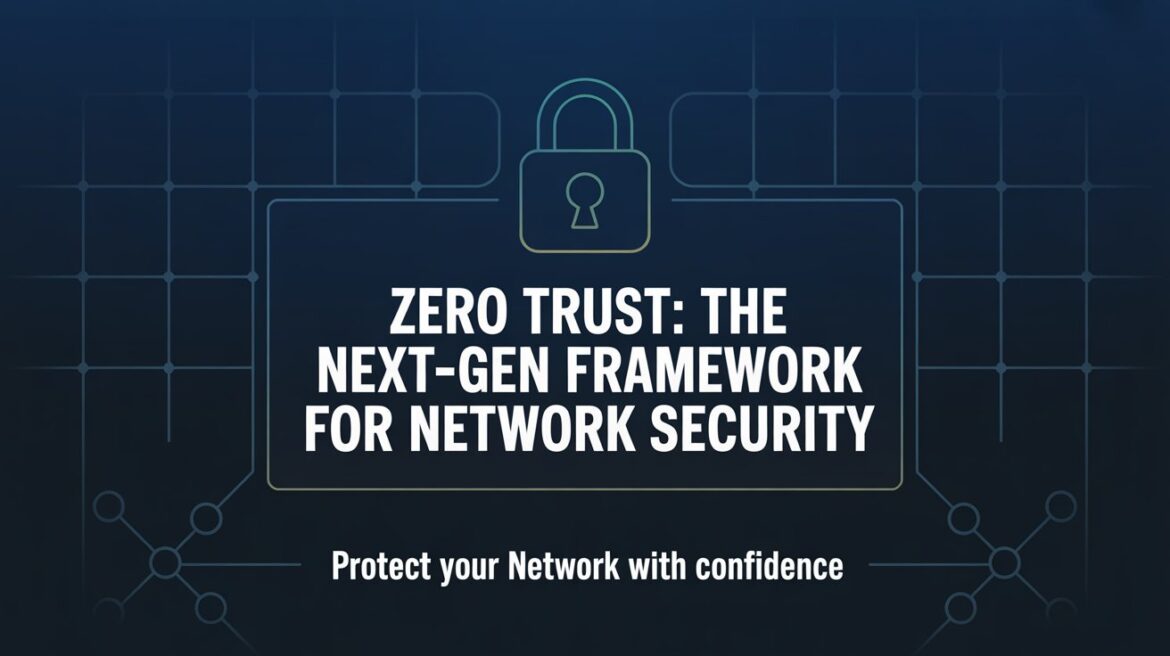As cyber threats grow in sophistication, traditional perimeter-based defenses are no longer sufficient. Enter Zero Trust, a security paradigm built on the principle of “never trust, always verify.” Instead of assuming anyone inside the network is safe, Zero Trust continuously validates every user, device, and application before granting access. In this post, we’ll break down the core principles of Zero Trust, explore its benefits, outline implementation steps, and examine emerging trends shaping next-generation network security.
What Is Zero Trust?
Zero Trust is a strategic approach that assumes all network traffic—internal or external—is untrusted by default. Developed by analyst firm Forrester in 2010, the model shifts security from relying solely on a hardened perimeter to securing resources through granular access controls, strict authentication, and real-time monitoring. Key tenets include:
- Least-Privilege Access: Users and devices receive the minimum level of access required for their roles or tasks.
- Continuous Verification: Every request is authenticated and authorized, regardless of source or destination.
- Micro-Segmentation: Networks are divided into small, isolated zones to limit lateral movement by internal or external attackers.
- Device Posture Checking: The security and compliance status of devices is evaluated before granting access.
By enforcing these principles, organizations can dramatically reduce the attack surface and limit the impact of breaches.
Core Principles of Zero Trust
1. Strict Identity Verification
Identity is the new perimeter. Robust multi-factor authentication (MFA), single sign-on (SSO), and adaptive risk scoring ensure every user is who they claim to be before they connect.
2. Micro-Segmentation
Rather than one large network, traffic flows through micro-perimeters around specific applications or workloads. If an attacker breaches one segment, they cannot freely traverse the network.
3. Least-Privilege Access
Access rights are tightly scoped. Users and services receive only the permissions necessary—no more, no less—minimizing potential misuse.
4. Continuous Monitoring & Logging
Real-time analytics and behavioral monitoring detect anomalies and trigger automated responses. Detailed logs enable rapid incident investigation and forensics.
5. Device Compliance Checks
Before granting access, the system evaluates device health—ensuring up-to-date patches, antivirus status, and configuration compliance.
Benefits of Adopting Zero Trust
- Reduced Attack Surface: By segmenting resources and enforcing least-privilege, you limit the pathways attackers can exploit.
- Improved Visibility: Centralized logging and continuous monitoring provide deep insights into user behavior and network traffic.
- Enhanced Compliance: Fine-grained controls help meet regulatory requirements such as GDPR, HIPAA, and PCI DSS.
- Faster Incident Response: Automated policies and real-time alerts enable security teams to detect and contain threats swiftly.
- Scalable Security Model: Zero Trust principles apply across on-premises, cloud, and hybrid environments, supporting digital transformation initiatives.
How to Implement Zero Trust
- Assess Current State
- Map critical assets, data flows, and trust boundaries.
- Identify existing gaps in authentication, authorization, and monitoring.
- Define the Protect Surface
- Determine which data, assets, applications, and services (DAAS) are most critical.
- Build micro-perimeters around these resources.
- Establish Strong Identity Management
- Deploy MFA and SSO.
- Integrate with identity providers (IdPs) using protocols like OAuth 2.0 and SAML.
- Segment the Network
- Use software-defined micro-segmentation tools in data centers and cloud environments.
- Enforce access policies via firewalls, SD-WAN, or Zero Trust Network Access (ZTNA) gateways.
- Implement Continuous Monitoring
- Leverage security information and event management (SIEM) and user and entity behavior analytics (UEBA).
- Automate alerts and responses using security orchestration, automation, and response (SOAR) platforms.
- Enforce Device Posture Checks
- Integrate endpoint detection and response (EDR) for real-time compliance assessment.
- Block or quarantine non-compliant devices.
- Iterate & Optimize
- Continuously review logs, refine policies, and adapt to new threats.
- Conduct regular red-team exercises and penetration tests.
Challenges and Best Practices
- Cultural Shift: Moving to Zero Trust requires buy-in from leadership and alignment across IT, security, and business teams.
- Complexity Management: Start small—protect a single application or environment—and expand gradually.
- Tool Sprawl: Consolidate solutions when possible; choose platforms that integrate identity, access, and analytics.
- User Experience: Balance security with usability; employ risk-based authentication to reduce friction for low-risk activities.
Future Trends in Zero Trust
- AI-Driven Analytics: Machine learning models will enhance anomaly detection and automate policy adjustments in real time.
- Identity-Defined Security: The rise of decentralized identity (DID) and identity wallets will give users more control and further reduce password risks.
- Secure Access Service Edge (SASE): Combining Zero Trust and cloud-native networking to deliver security as a service, closer to users and devices.
- Quantum-Resistant Cryptography: Preparing for post-quantum threats by integrating quantum-safe algorithms into Zero Trust architectures.
Conclusion
Zero Trust is more than a buzzword—it’s a strategic imperative for organizations striving to stay ahead of evolving cyber threats. By embracing strict identity verification, micro-segmentation, and continuous monitoring, you can transform your network into a resilient fortress. Although the journey may seem complex, a phased approach—starting with your most critical assets—will help you build a scalable, future-proof security posture that empowers your business and protects your data.
